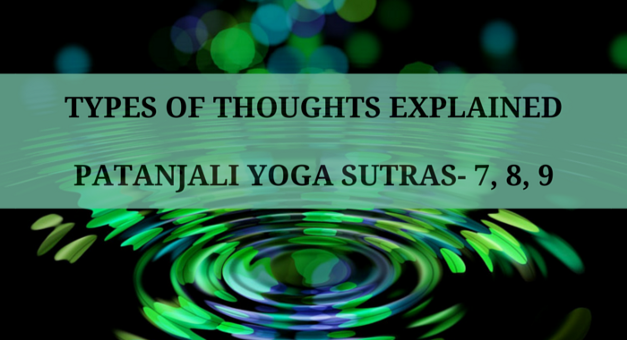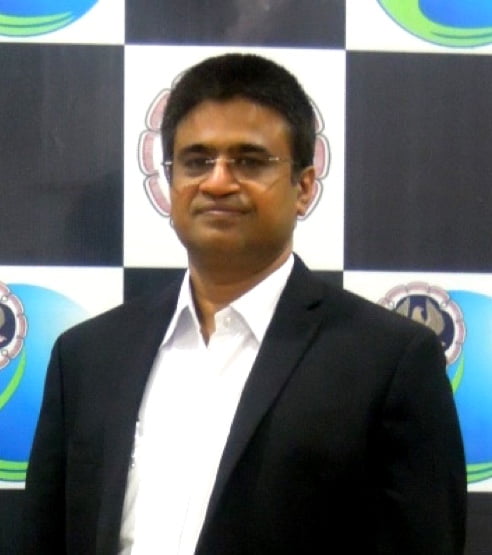The concept of the classification of thoughts has been discussed in the previous post with some examples. Now we will go in depth about each type of thought wave that a person has.
In this ancient text, importance has been given to the context and individual perception. It is not important to know whether it is true or false or correct or incorrect. Albert Einstein has given science a paradigm shift and brought relativity into limelight. He moved science forward from the Newtonian age which was more objective. It is what the person perceives that is the root cause for Vritti. It is an anomaly which needs to be understood and addressed.
In the previous post, we had taken the example of water. Moving ahead on the example of water, we will discuss how the thoughts get classified into Pramana, Viparyaya, and Vikalpa.
If someone told you that the water we drink now, may have been used in the flush by someone in the past, you will find it disgusting. This thought is repulsive and sounds idiotic. Nevertheless, the fact is that Water is in a closed system on our planet earth. Whatever be the number of people living on the planet, the water is now exactly the same quantity as it was millions of years ago.
The bonding of Hydrogen and Oxygen atoms inside the water molecule is complicated. It is not possible to break this bond. Modern science till date has not been able to replicate the same. Water just changes its form with change in the temperature. This is a conclusively proven statement but it is not a common knowledge.
प्रत्यक्षानुमानागमाः प्रमाणानि॥७॥
Pratyakṣānumānāgamāḥ pramāṇāni||7||
Proven, Inferred and Conclusively established knowledge, as it appears to a person, is known as proven or Pramana thought wave. It means knowledge which is obtained through proven methods, rational thinking and reliable sources. As stated earlier, this ancient scripture primarily focuses on the individual’s perception. So we are taking things from the point of view of an individual who has that thought. We classify some thoughts in this category.
An individual acquires knowledge or information about the world through proving things to himself in different ways. He proves various things to himself in order to develop his own understanding. This way, he creates his own set of beliefs and ideals. Whatever knowledge or information an individual has, is either proven by himself, or inferred by him from the known facts, or derived out of sources on which the individual likes to rely on. Here, it is not important whether the individual is right or wrong. But it is important to understand that the concerned individual thinks his thoughts to be established facts.
For instance, Steam is a form of water. If an individual understands both steam and water as one and the same thing, this will be the Pramana for him. At the same time, there is another individual who says steam is not water, since it is in a gaseous state. Now the latter individual wants to believe that steam and water are two different substances. He is carrying his own thought, based on his knowledge of the state of matter i.e. Solid, Liquid and Gas.
It is important to note that, the focus here is on the belief of the individual and not on the accuracy of any information. Information as such is Mithya (False). We will take it up later on at the appropriate time. At this time, it is important to understand that a Pramana thought is a clearly proven and an established fact which the individual believes to be true.
विपर्ययो मिथ्याज्ञानमतद्रूपप्रतिष्ठम्॥८॥
Viparyayo mithyājñānamatadrūpapratiṣṭham||8||
The second type of thought wave is termed as Viparyaya. It is a doubtful state of thought. Unlike Pramana, there is no conclusive proof or an established fact in the Viparyaya thoughts. The individual(perceiver) does not have a conclusive proof about the thoughts in his mind.
Mithya is the wrong identification of an object or a wrong inference that an individual makes in his thought. For example, a person sees a snake and assumes it to be poisonous and fears it. While someone having knowledge about snakes will easily identify whether the snake is poisonous or not. Carrying this example forward, when a child sees a snake, it is unable to understand whether the snake is something to be frightened of. The child will try to catch the snake as a play thing. So the mind of the child mistakes the shape of the moving snake for a toy.
Viparyaya thought waves can also act as assumptions and guess work where the individual does not have a conclusive proof. When the individual is weighing options or variations or when he is trying to get more information on something unknown, these thought waves confuse an individual with various options. The thoughts have too many manifestations and so the person is not able to appreciate and understand the same. Such a state of mind is Viparyaya.
शब्दज्ञानानुपाती वस्तुशून्यो विकल्पः॥९॥
Śabdajñānānupātī vastuśūnyo vikalpaḥ||9||
The third type of thought wave is called Vikalpa. Here in this thought wave, the individual follows his own understanding of a particular concept. He follows his own assumptions and beliefs in order to understand things that are not in alignment with the origin of the information.
Every
individual amasses and gathers knowledge over his lifetime. Whatever an
individual hears from others, he interprets it according to his
existing knowledge, vocabulary and visualization. The individual always
interprets the information based on his beliefs and assumptions that
form the basis of his beliefs .
When an individual interprets
something with a different meaning than its actual intended meaning as
espoused in the origin , then it is the state of Vikalpa. For example,
two software developers are having a chat at the bus stop. A fellow
passenger standing nearby and is listening to the conversation between
them. As soon as the person hears the word “movie” in the conversation,
he normally assumes that the conversation must be about the movies that
run in the movie theaters.
However, the passer by is unaware of the full facts. The fact that they are discussing a movie maker software and referring to an swf movie file and not the movie in the theaters, can not be understood by him. The person overhearing their conversation, will generate thoughts about the cinema movies. Whereas the reality is completely different. This is a Vikalpa thought wave.
To sum up, it is to be understood that thoughts of all kinds as such are a vritti, an anomaly which needs to be addressed and cured by practice of Yoga. A thought can be any of the above three types. More information or knowledge may change a thought from one type to other. But the fact remains that the thought can be a cause of pain in future and so needs to be addressed.
Thus, an individual’s knowledge here is described as relative in nature rather than absolute. Thoughts are based on how an individual perceives something. Regardless of the fact whether it is right or wrong. These three types of waves- Pramana ,Viparyaya, Vikalpa encompass all types of thoughts that a person can have in his life incessantly. Understanding these thought waves will help us to take control of our thoughts through the practice of Yoga. It helps to balance the thoughts and results in a peaceful mind. We will discuss more about further thought waves in the next article.

